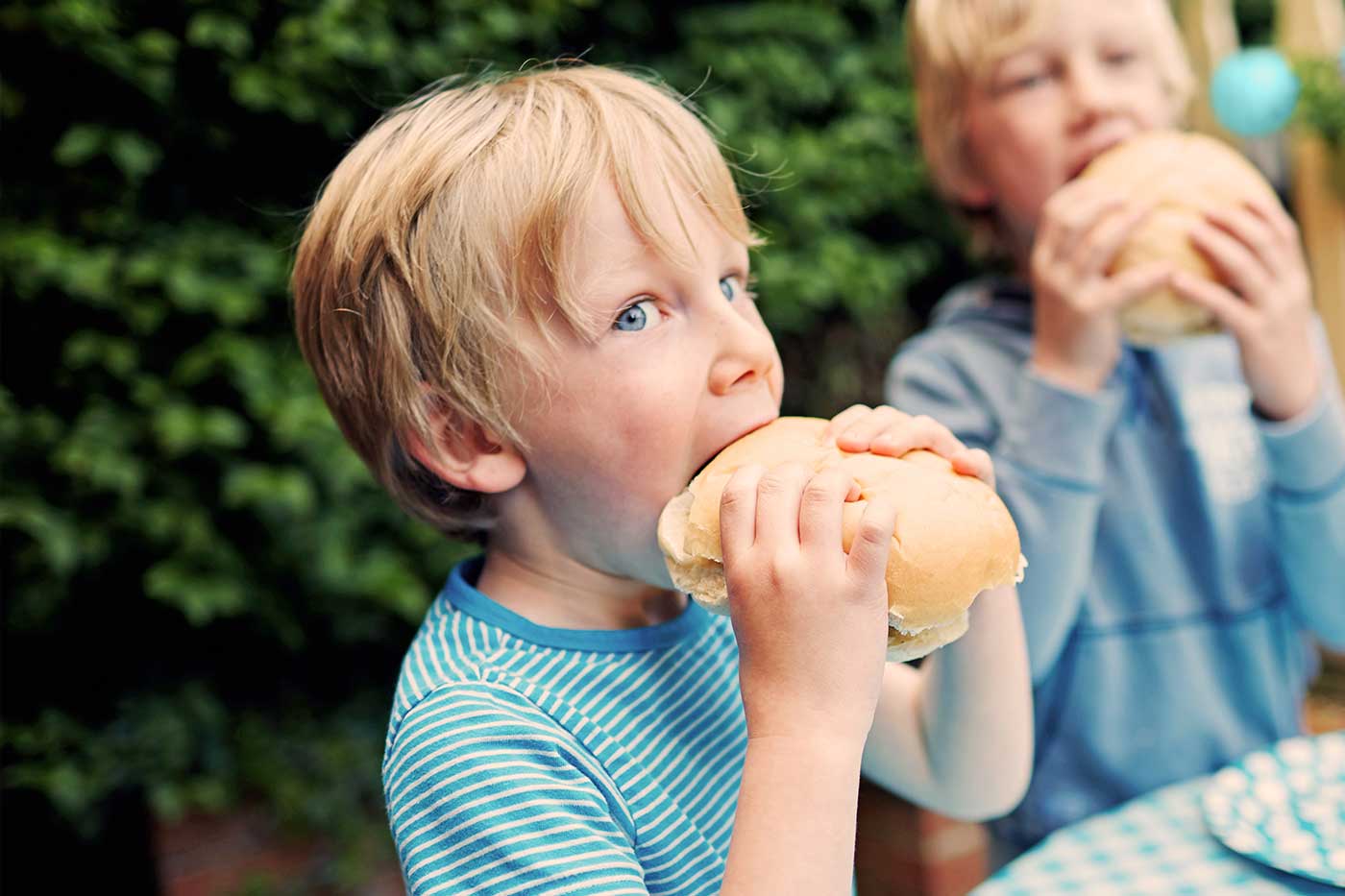Your guide to food safety at barbecues and picnics
Produced by:

As the weather warms up and outdoor gatherings become more frequent, food often takes center stage at seasonal celebrations. Whether you’re grilling, picnicking, or enjoying a backyard meal, it’s important to take precautions when it comes to safe food handling, preparation, and cooking, to avoid food-borne illnesses like Salmonella and E. coli, which can be serious and, in some cases, life-threatening.¹
The Centers for Disease Control and Prevention (CDC) estimates that each year 48 million (or roughly one out of six Americans) get sick, 128,000 are hospitalized and 3,000 die from foodborne diseases.2
Typical food-poisoning symptoms include vomiting, stomach cramps, diarrhea and fever, all of which may range from mild to serious and can last from a few hours to several days.3 Health care professionals caution that certain people have an increased risk for foodborne illness including pregnant women, older adults, young children and people with weakened immune systems.4
To help you keep your families healthy and protect them from food poisoning, here are some general food and kitchen hygiene tips to help you safely prepare and serve your meals.5 Foodborne illnesses tend to increase during the summer months because bacteria multiply faster when it’s warm, so following food safety guidelines is especially critical for raw meats, summer salads, dairy products, fruits and vegetables, which are among the most perishable foods at cookouts.6
- Clean everything: It is important for those preparing and handling food to frequently wash their hands before and after they start cooking, and to use fresh, clean plates and utensils for serving cooked food.7
- Do not cross contaminate: Raw meat, poultry, seafood, and eggs can spread germs to ready-to-eat food unless you keep them separate.8
- Cook to the right temperature: The only way to tell if food is safely cooked is to use a food thermometer to make sure meat, poultry and fish are cooked to a safe internal temperature.9
- Refrigerate perishable food within two hours. When food is left unrefrigerated for more than two hours, bacteria grow rapidly.10 For temperatures over 90F, food should be refrigerated within an hour.11
Enjoy the season and all the delicious meals it brings, but don’t forget to make food safety a priority. By following these simple guidelines, you can help protect your family and friends from foodborne illness and ensure that every gathering is both enjoyable and safe.
Disclaimer
The information featured in this site is general in nature. The site provides health information designed to complement your personal health management. It does not provide medical advice or health services and is not meant to replace professional advice or imply coverage of specific clinical services or products. The inclusion of links to other web sites does not imply any endorsement of the material on such websites.
- Food Poisoning Symptoms | CDC
- Foodborne Germs and Illnesses | CDC
- Food Poisoning Symptoms | CDC
- People With a Higher Risk of Food Poisoning | Food Safety | CDC
- Four Steps to Food Safety | CDC
- Food Safety by Events and Seasons | FoodSafety.gov
- Four Steps to Food Safety | CDC
- Four Steps to Food Safety | CDC
- Four Steps to Food Safety | CDC
- Four Steps to Food Safety | CDC
- Four Steps to Food Safety | CDC
Heart-healthy diet guide: Mediterranean, DASH, and plant-based approaches for cardiovascular wellness
Learn about ways of eating that can support a healthy heart. Plus, tips for sticking to a heart-healthy eating pattern.
Read articleHealthy habits that can help maintain a good blood pressure
Your blood pressure can tell you a lot about your overall health. Here are ways to keep it in a healthy range. Plus, how to check your blood pressure at home.
Read articleHow diabetes affects your heart: Insights from Dr. Lindsey Mitrani
Dr. Lindsey Mitrani shares how diabetes can impact heart health, signs to watch for, and steps you can take to protect your heart during Diabetes Awareness Month.
Read article
Mammograms: What you need to know
In honor of Breast Cancer Awareness Month, we spoke with Dr. Shani Fruchter, a board-certified breast surgeon at Optum Medical Care, to break down everything you need to know about mammograms. From when to start screening to what the procedure feels like, this guide helps demystify one of the most important tools in breast cancer detection.
Read article
